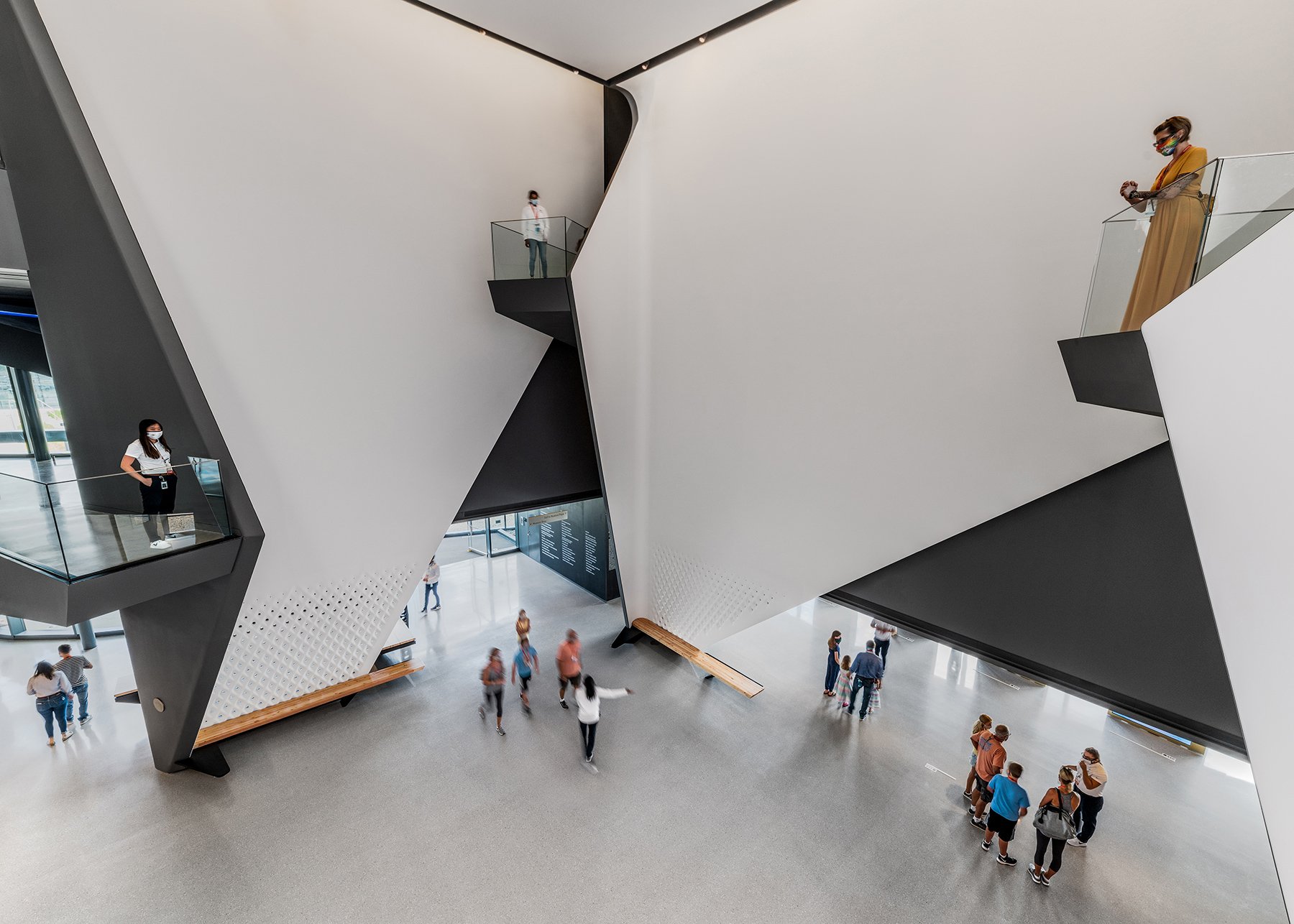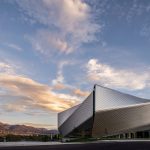Inspiring Accessibility Solutions by DS+R Designed Museum
The U.S. Olympic & Paralympic Museum opens its doors to the public in the Olympic City USA, which also accommodates the U.S. Olympic & Paralympic Committee and the U.S. Olympic & Paralympic Training Center. The proximity of the location to Colorado Springs, the natural setting that attracts millions of tourists each year, is considered as having an impact on the number of visitors of the Diller Scofidio + Renfro designed museum.
Focused on the dynamism of the Olympic runners, the entire project is designed to direct its guests to feel their spirit while visiting the museum. The architects achieved a route that connects the elevated floors by using a 1.8 meters wide spiral ramp to allow the wheelchairs, inspired by the Guggenheim Museum in New York City. In this way, the building space became reachable also for individuals with disabilities, underlining the design of a museum considered as one of the most accessible in the world. On the other hand, the architectural elements in terms of visibility and materiality have been also designed to enable people having disabilities to enjoy the building just as everybody else. The floors are covered by smooth materials for the wheelchair movements as the transparency of the handrails has been improved to create a special line of sight.
The visitors enter the museum through a grand atrium covered by a 12-meter-high ceiling. Then using the elevator, they access to the top level in order to start their journey to the 12 different galleries. The light that enters these galleries from the clerestory windows also goes into the atrium. To create a circulation path concerning the accessibility matters, descending the levels of the museum gradually was considered at the beginning of the design phases. At the end of this scenario, the function of windows is enriched by the cityscape view.
The project has great importance creating a public flow to link the urbanized and the old part of the city. Contributing in this distribution, a pedestrian bridge structure in a fine form is designed to be built soon.
The geographical significance of the project has resulted in an ambition for the architecture company to design internal and external contacts within the building site. Therefore, the actual building consists of two parts that are connected by a terraced plaza with the amphitheater seats to host outdoor events while enabling a pleasant view of the environment. The theater that accommodates up to 130 people including the space for those with disabilities, and the events space are located inside the main building of the museum. However, the café and the educational space are established in the additional construction, covered by a green roof.
The custom designed aluminum cover is selected to dress the main structure to make it look like the stretchy clothing of an Olympic runner. 9000 aluminum panels are used in diamond like shape. Each of them is different in scale but elevated from the center, which is decided after numerous modelling trials with aluminum, creating 2 triangular shape to animate the light on the façades of the museum. It is considered that the diamond shape changes the motion of the shadow. Thus, the shade of the metal color of every panel varies every hour.
This current activity of the architecture studio presents the accessibility solutions in all design aspects.
PHOTOGRAPHS: Jason O’Rear
YEAR: 2020
DESIGN ARCHITECT: Diller Scofidio + Renfro, (Partner-in-charge: Benjamin Gilmartin)
ARCHITECT OF RECORD: Anderson Mason Dale Architects
EXHIBITION DESIGNERS: Gallagher & Associates
MUSEUM AND CONTENT DEVELOPMENT: Barrie Projects
STRUCTURAL ENGINEER: KL&A in collaboration with Arup
CIVIL ENGINEER: Kiowa Engineering Corporation



















































Leave a comment